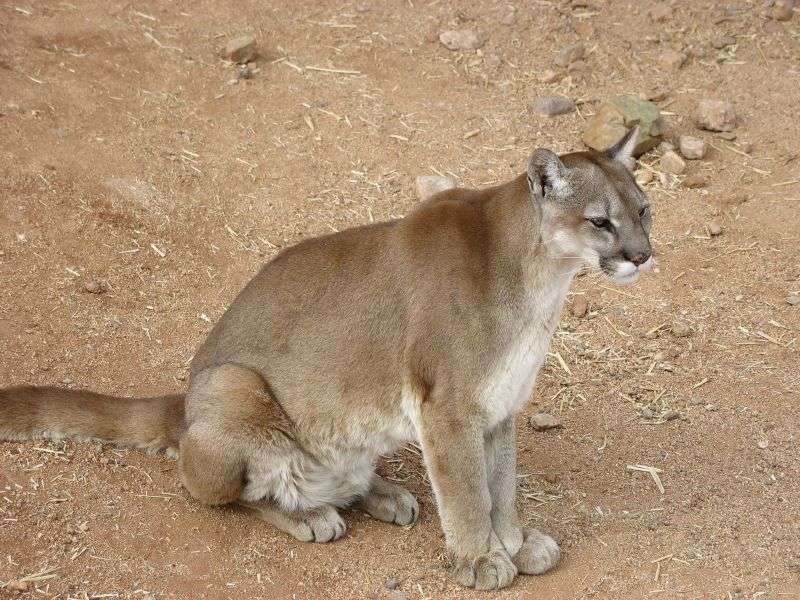Credit: AskJoanne/Wikipedia
(Phys.org)—A team of researchers affiliated with multiple institutions in the U.S. has found that mountain lions in the Santa Monica Mountains are likely to go extinct in approximately 50 years if something is not done to protect them. In their paper published in the journal Proceedings of the Royal Society B, the team describes the conditions under which the mountain lions are living and why they believe they are severely threatened.
Mountain lions hold a special place in American folklore. For generations, people have viewed them with both appreciation and wrath. Also known as cougars, pumas and panthers, the big cats represent a wild and exciting time in U.S. history—one that has passed away forever. Over the past century, park rangers have been assigned the task of monitoring mountain lion populations, their health and the environment in which they live. One of those places is a small area in the Santa Monica Mountains—just north and west of Los Angeles. It is a sanctuary of sorts, existing as a pocket of wilderness between several intersecting freeways that have boxed in the lions to the extent that they are now at risk of extinction because of a lack of breeding opportunities. In this new effort, the researchers looked at data regarding the numbers of mountain lions living in the area, their breeding options and prior research that has shown what happens to a species when inbreeding occurs.
After analyzing the data, the team came to the conclusion that the mountain lions have a 99.7 percent chance of going extinct over the course of the next 50 years unless humans do something to help them survive. Prior research, they note, has shown that when inbreeding occurs due to a lack of breeding options, the offspring of animals like mountain lions begin to have birth defects such as holes in their hearts and male infertility. Such problems in a low-level population can spell doom for a species very quickly.
Fortunately, there is a movement afoot—locals and wildlife agencies have banded together to raise money to build an animal bridge across one of the major freeways, called the Liberty Canyon Wildlife Crossing—the project is estimated to cost approximately $50 million. But supporters note that the crossing would help more than just the lions; it would also allow a host of wildlife the option of moving in and out of the area, perhaps offering many of them a chance to survive into the next century.
More information: Interactions between demography, genetics, and landscape connectivity increase extinction probability for a small population of large carnivores in a major metropolitan area, Proceedings of the Royal Society B, rspb.royalsocietypublishing.or … .1098/rspb.2016.0957
Abstract
The extinction vortex is a theoretical model describing the process by which extinction risk is elevated in small, isolated populations owing to interactions between environmental, demographic, and genetic factors. However, empirical demonstrations of these interactions have been elusive. We modelled the dynamics of a small mountain lion population isolated by anthropogenic barriers in greater Los Angeles, California, to evaluate the influence of demographic, genetic, and landscape factors on extinction probability. The population exhibited strong survival and reproduction, and the model predicted stable median population growth and a 15% probability of extinction over 50 years in the absence of inbreeding depression. However, our model also predicted the population will lose 40–57% of its heterozygosity in 50 years. When we reduced demographic parameters proportional to reductions documented in another wild population of mountain lions that experienced inbreeding depression, extinction probability rose to 99.7%. Simulating greater landscape connectivity by increasing immigration to greater than or equal to one migrant per generation appears sufficient to largely maintain genetic diversity and reduce extinction probability. We provide empirical support for the central tenet of the extinction vortex as interactions between genetics and demography greatly increased extinction probability relative to the risk from demographic and environmental stochasticity alone. Our modelling approach realistically integrates demographic and genetic data to provide a comprehensive assessment of factors threatening small populations.
Journal information: Proceedings of the Royal Society B
© 2016 Phys.org























